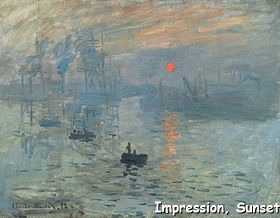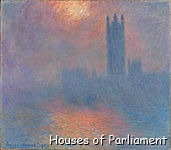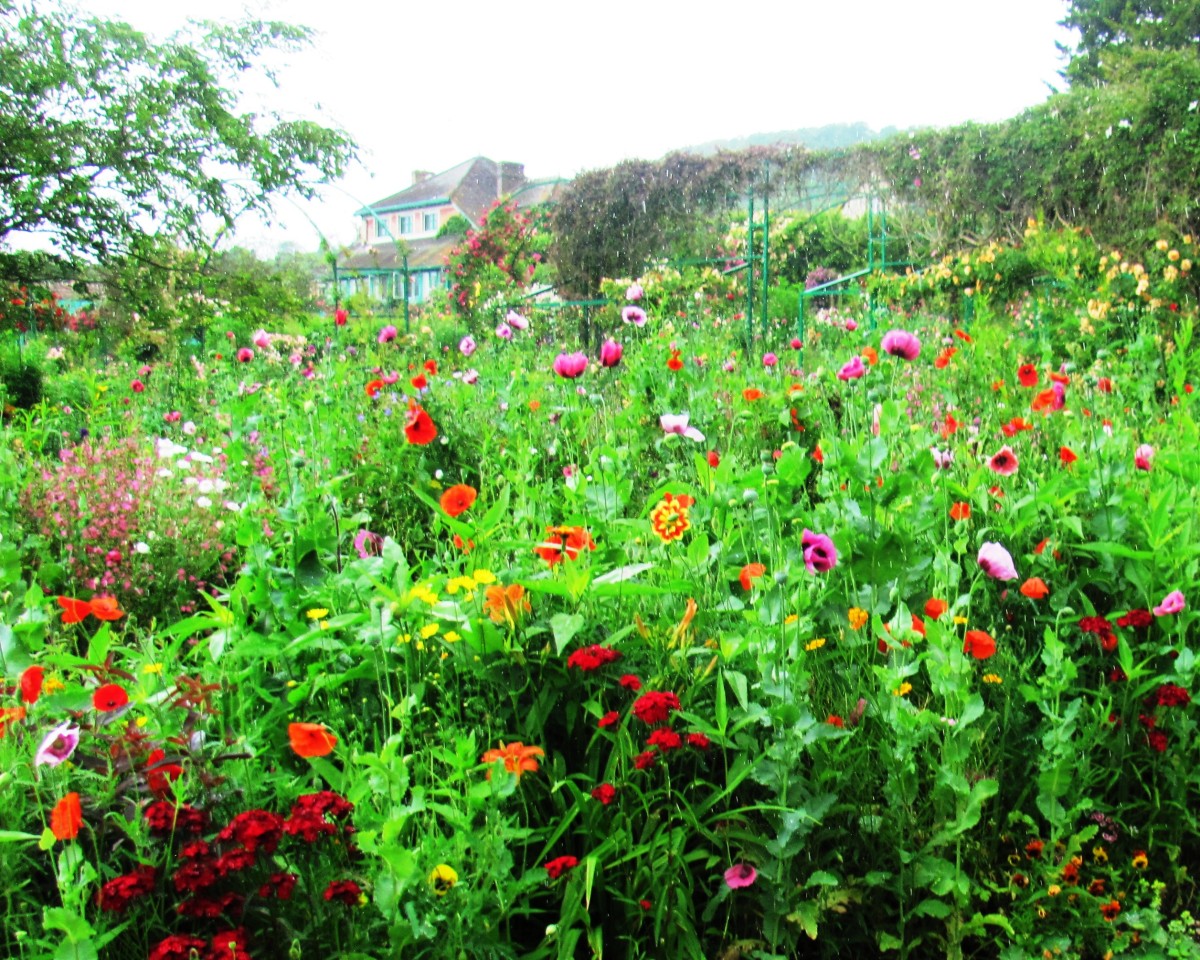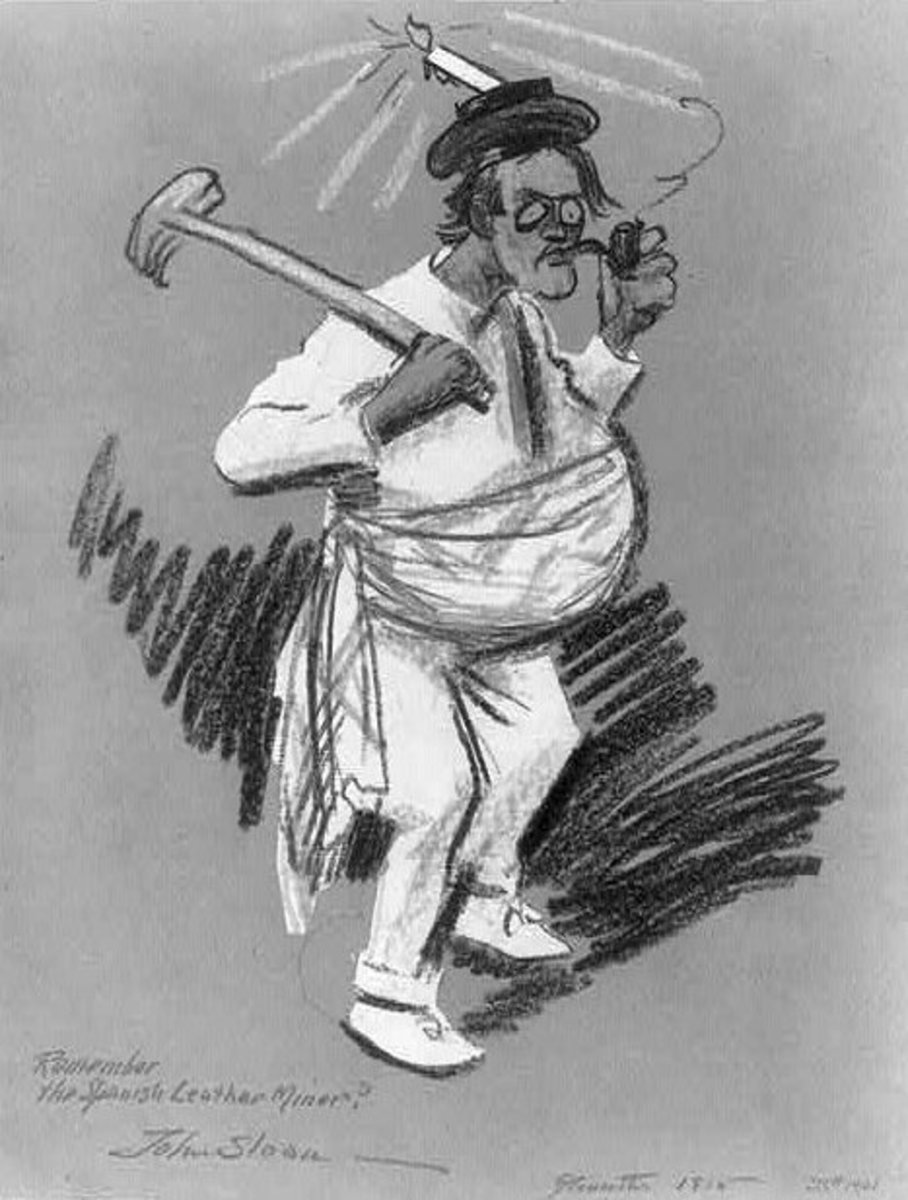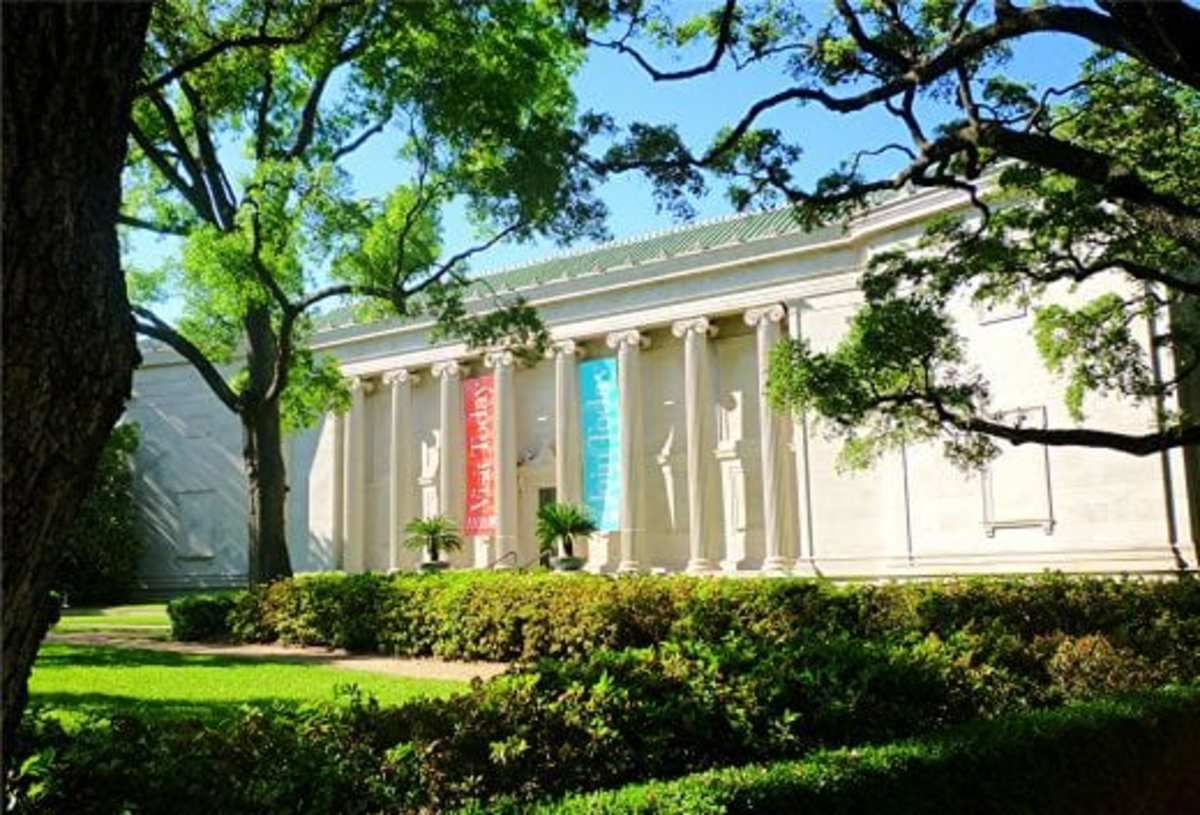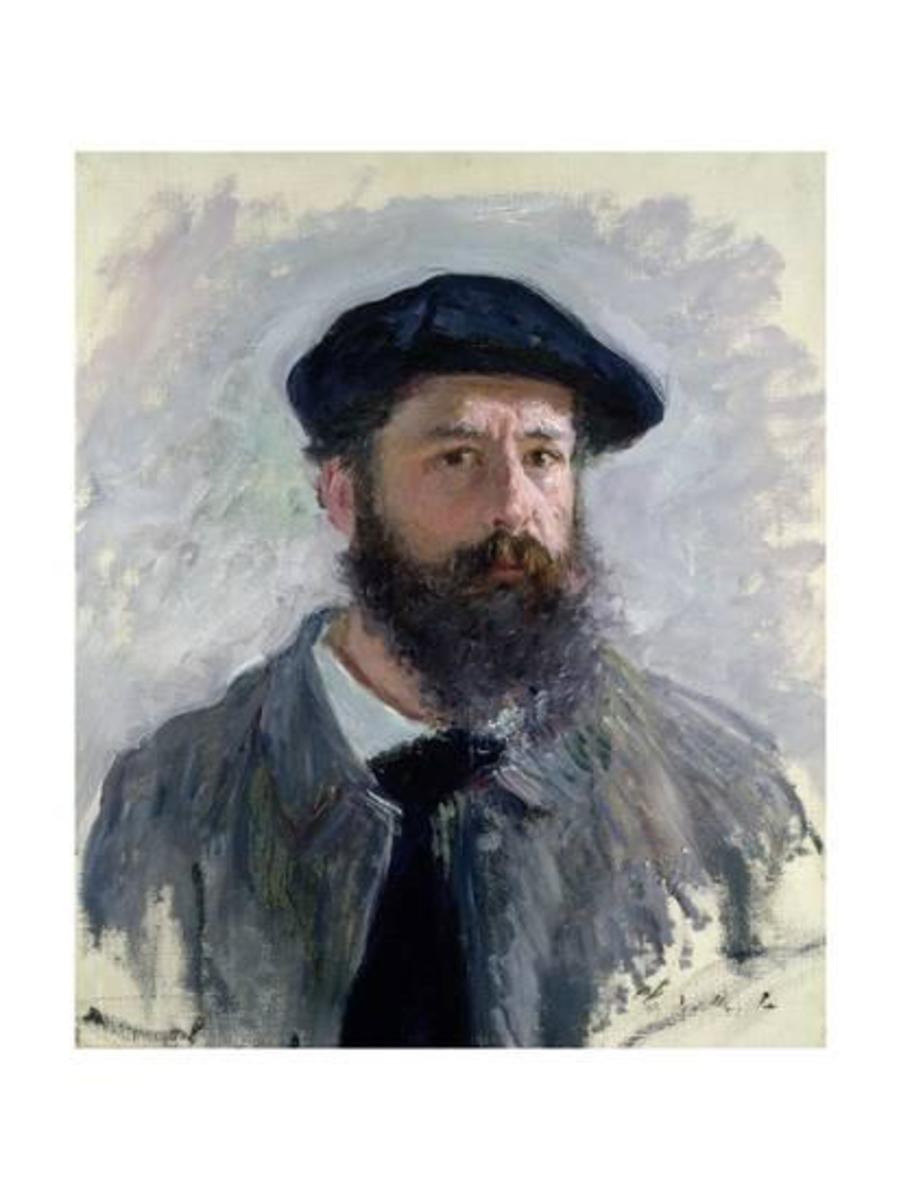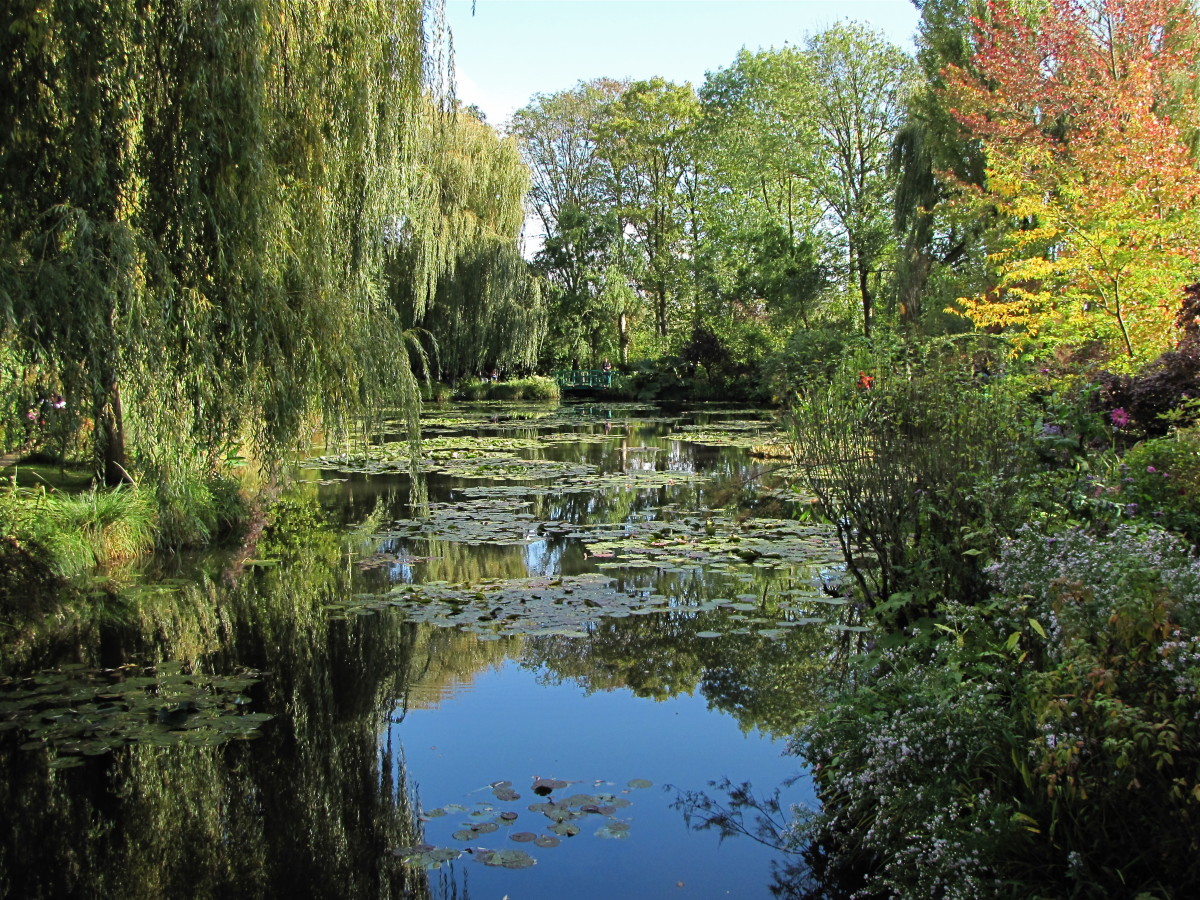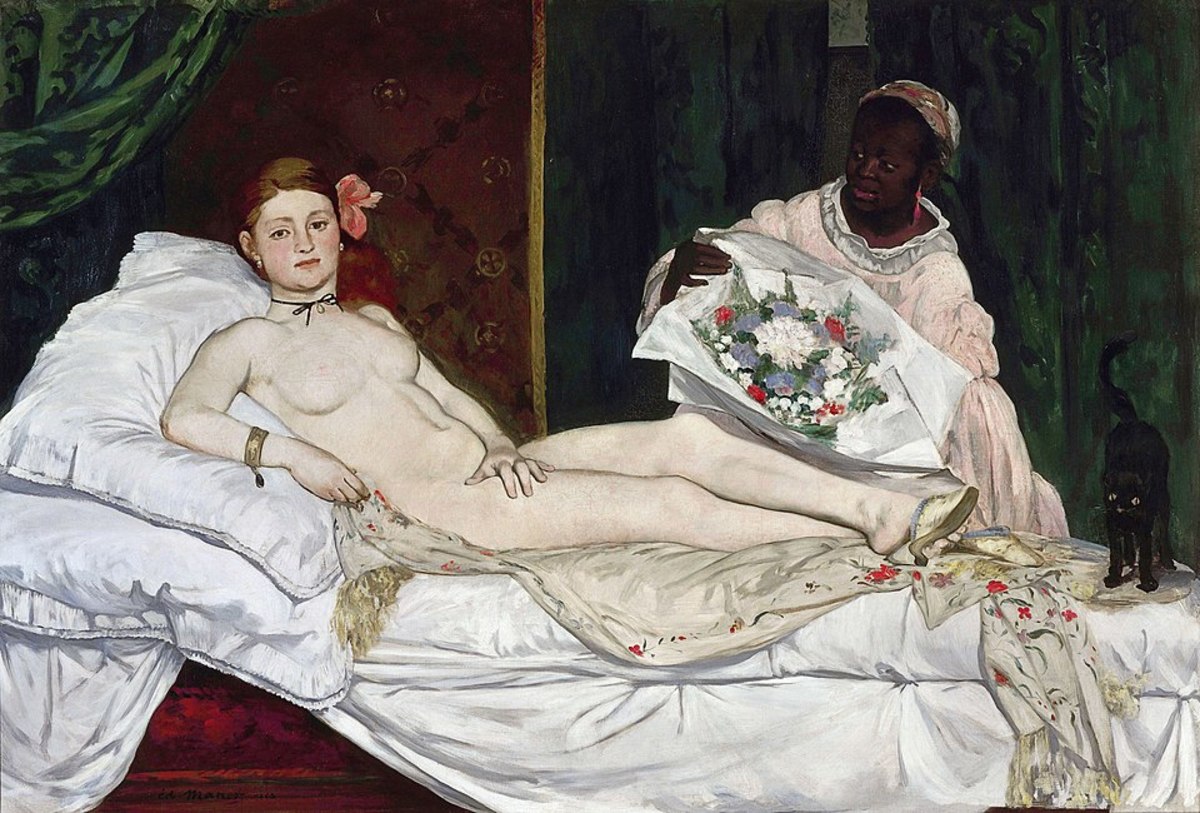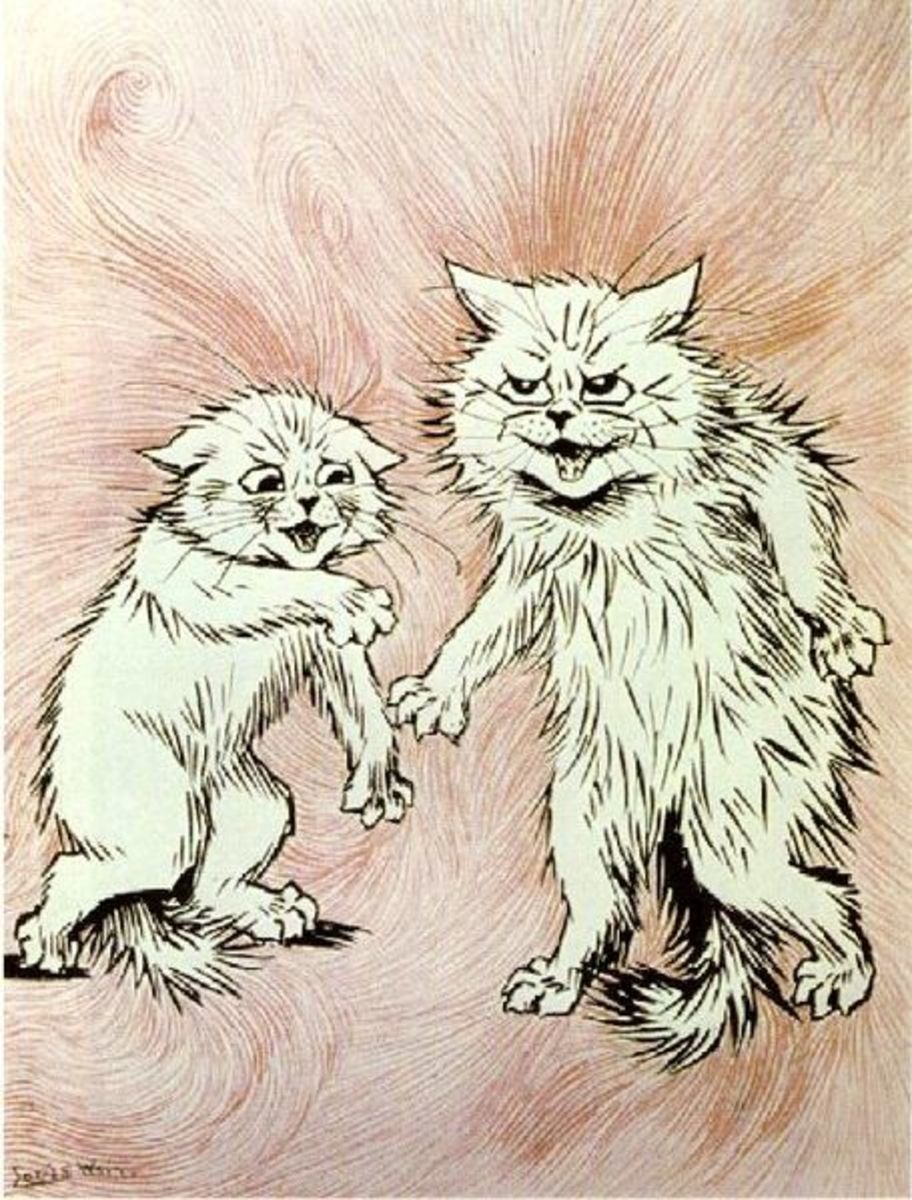Oscar-Claude Monet
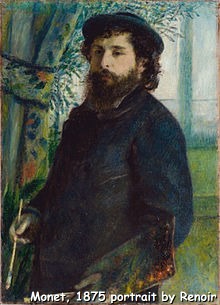
Oscar-Claude Monet, the French impressionist painter, was born on 14 November 1840 in Paris the second son of Claude Adolphe Monet, a grocer, and Louise Justine Aubrée Monet, a singer. The family moved to Le Havre in 1845 and it was in this city that Monet spent his childhood.
His father wanted Monet to follow the family trade and become a grocer, but the young Monet had aspirations to being an artist and on all fools day, 1851 he entered the Le Havre secondary school of the arts. His first drawing lessons were given him by Jacques-Francǫis Orchard, a former student of Jacques-Louis David. Subsequently, around 1856, he met a fellow artist, Eugene Boudin, a painter of small beach scenes, who mentored him, teaching him the proper use of oil paints as well as the techniques of outdoor painting. It is to his growing years at Le Havre, a period spent playing among the smacks at the mouth of the Seine, that his love for the reflections of trees and houses on water can be traced; a love which never left him.
Monet did his military service in Algiers and on his return to Paris, after his military service was cut short due to health problems, he entered the studio of Gleyre in 1862 and it was whilst he was here that he became acquainted with Renoir, Bazille and Sisley.
Already by 1863, Monet was putting the ein plein air techniques that he had learned from Boudin to use and was painting in open air although he still worked his canvasses in studio and his paintings were already considered of sufficient quality that he was exhibited at the Salon de Paris in 1865, 1866 and 1868.
But even by the time of the 1868 Salon, there were dark clouds on the horizon. As Monet’s art developed, he had come more and more to use juxtaposed and unmixed strokes of color, a technique which raised the ire of the critics. At all events, the Salon jury refused to accept any of the landscapes that he submitted for entry for the exhibitions of 1869 and 1870, deeming them unsuitable.
The outbreak of the Franco-Prussian war in 1870 found the artist in England where he had taken refuge. In England, he worked alongside Pissaro and developed a great enthusiasm for the works of Turner and Constable whose techniques had foreshadowed his own experiments. By this time, Monet’s energetic impetuosity combined with the dynamic character that he infused into his sketches had caused him to be the acknowledged leader of a group of ground-breaking young landscape painters.
The period following his return to France (1871-1876) after the war was an extremely fruitful one from an artistic viewpoint. His landscapes depicting diverse areas of France showed the acuity and subtlety of observation that Monet brought to bear, not so much on the forms that he was painting but on the effects that differing conditions of light can have on the forms that a person observes.
But if his art was growing, it was hardly appreciated by the art world at large and they were subjected to very severe criticism: they were, at best, sketchy, the critics claimed, and they displayed considerable incoherence. Such attitudes were not conducive to generating public admiration and Monet suffered extreme financial difficulties and he and his fellow impressionists were often on the verge of starvation.
Despairing of ever achieving recognition from the official art world, Monet and his friends decided to organize their own exhibition and set up the Societie anonyme des artistes peintres, sculpteurs et graveurs in 1873. The new body allowed any artist who was able to pay the entry fee of 60 francs to exhibit without the necessity of being vetted by a jury as was the case at the Salon. The first of what came to be called Impressionist Exhibitions took place in Paris form 15 April to 15May 1874. Henceforward, Monet was a regular exhibitor at subsequent impressionist exhibitions.
The 70s of the 19th century, as we have seen, was an extremely trying period for Monet. Other than Durand-Ruel, to whom the artist had been introduced whilst in London by Daubigny, no one it seemed was interested in impressionist art in general or Monet in particular. But by the early 1880s, things were beginning to turn around for the better and the art world was beginning to better appreciate the artist and his methods.
But even as the art world was becoming more appreciative of his works, Monet was already moving on and in his paintings of the early 1880s can be detected the seeds of abstract decorative effects. Monet had said, “I like to paint as a bird sings”; and his works continued to move further and further away from the academic theories that he had learnt at Gleyre’s studio.
In 1877, Monet had painted the first of what was to become a series of paintings where the artist repeatedly painted the same scene in different light conditions, at different times of the day, and through the changes of weather and season. The first of such series exhibited was the famous Haystacks, painted from different points of view and at different times of the day, 15 of which were exhibited at the Galerie Durand-Ruel in 1891. The following year, he produced his most famous series, 26 views of Rouen Cathedral. Cropping the subject so that only a portion of the facade is visible on the canvas, the paintings focus on the play of light and shade across the surface of the building rather than on the grand medieval building itself. Until the end of his life, Monet continued to explore every ramification of the effect of light on forms.
Not surprisingly, these later landscapes at first attracted little attention, but by the middle of the 20th century they had come into their own and were being interpreted as the forerunners of abstract expressionism. In 2004, 100 years after it was painted in 1904, Monet’s London, the Parliament, Effects of Sun in the Fog, was sold for $20.1 million dollars; a record sum for a Monet painting. In the words of Helen Gardner, “Monet, with a scientific precision, has given us an unparalleled and unexcelled record of the passing of time as seen in the movement of light over identical forms.
Monet died of lung cancer on 5 December 1926 at his property at Giverny which he had bought in 1883 and where he had painted his Water Lilies series; hewas aged 86. He is buried at the churchyard in Giverny.
